The Canon FD 20mm 2.8 is an affordable wideangle lens (around $200 mid 2015) which performs well on the Alpha 7. I have owned and used my copy for more than a year now and wanted to share my experience with you.
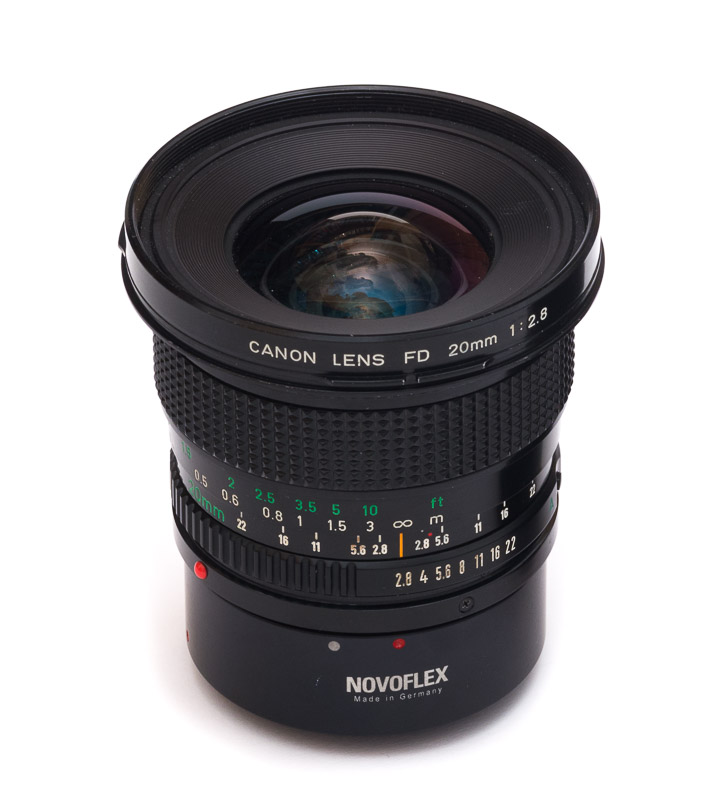
Sample Images
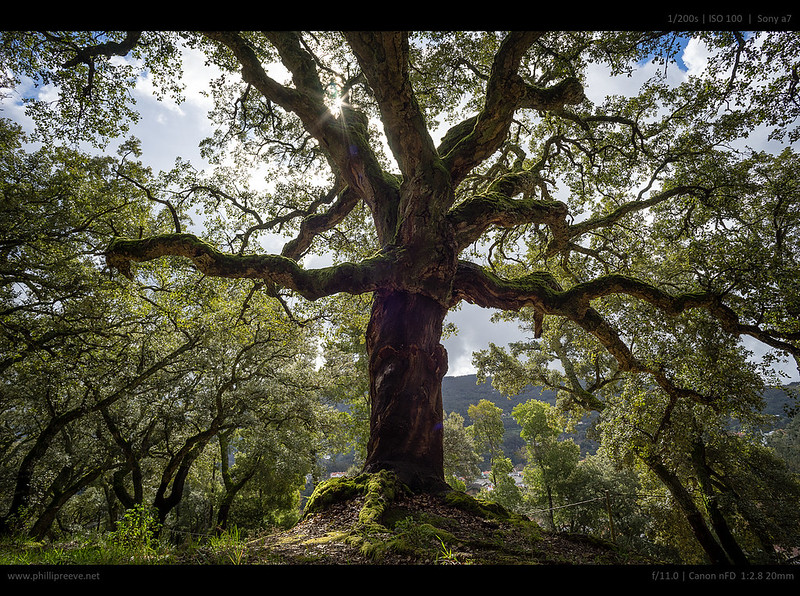
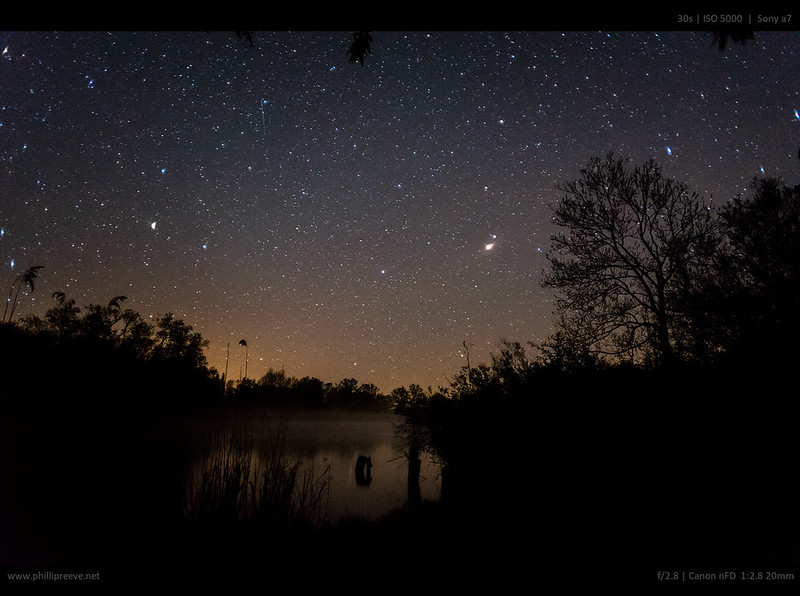
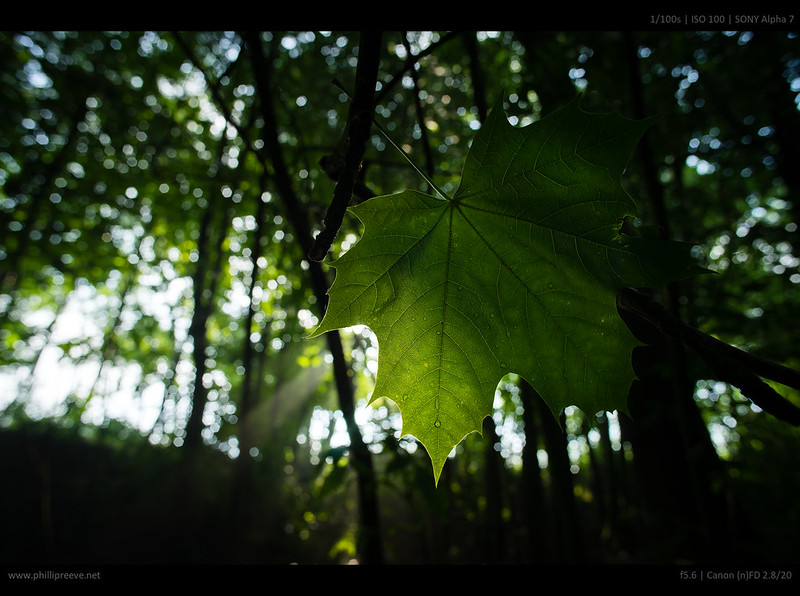
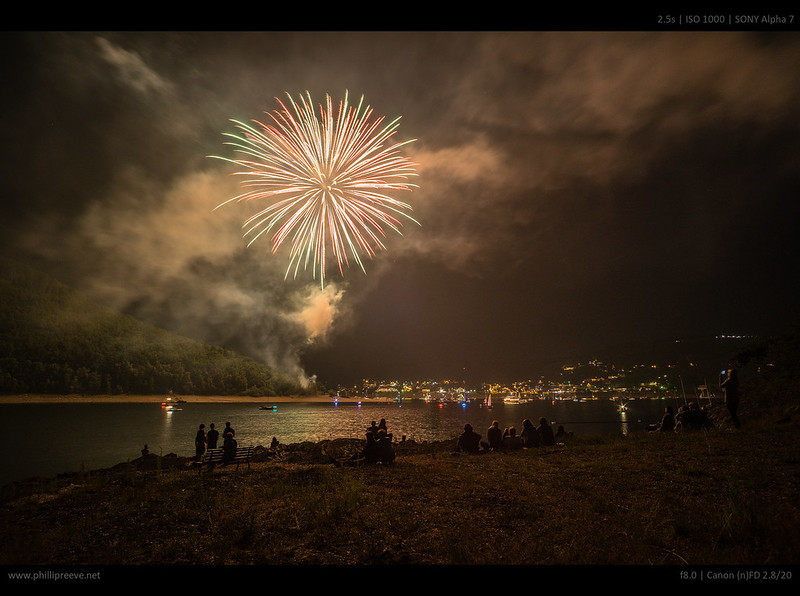
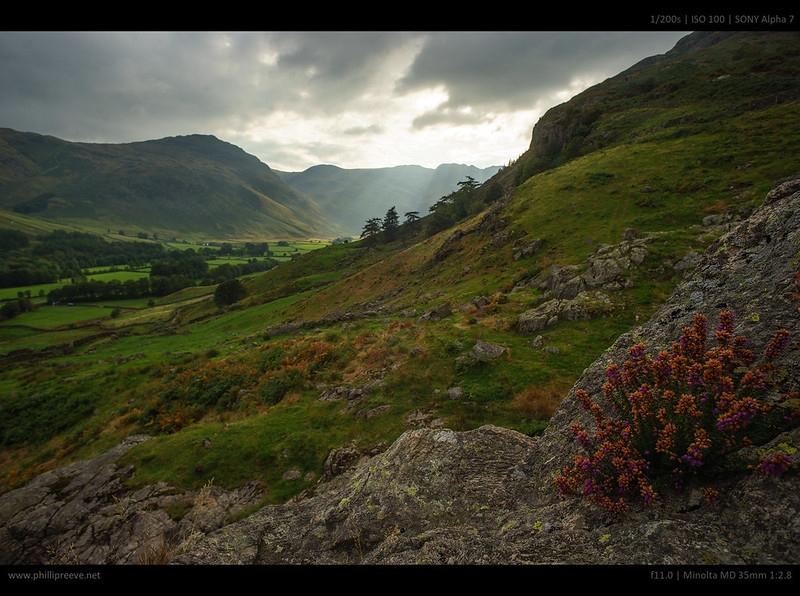
Specifications
| CANON FD 20 2.8 | ||
|---|---|---|
| Length | 62mm | |
| Diameter | 78mm | |
| Weight | 305g | |
| Filter Thread | 72mm | |
| Aperture Blades | 6 | |
| Short focusing distance | 25cm |
The Canon FD 2.8/20 at ebay.de | ebay.com (affiliate links)
Versions
As far as I know Canon made two mechanically different 2.8/20 lenses which share the optical design but I have no good source about Canon FD lenses to back this up.
- The older FD version has the classic silver breech lock mounting system and weights 345g.
- The newer nFD version is 40g lighter and has the newer nFD mounting system. I own this version
I would prefer the nFD version because it is 40g lighter than the older version and it might have better coatings.
Size, Weight and Handling
I think the 2.8/20 is well balanced on the a7. At 305g it is a little heavier than your typical 1.4/50, it is also a bit longer and has significantly larger diameter at the front.
The focusing ring turns about 130° from the short focusing distance of 25m to 1m and a further 30° to infinity. Focusing is smooth with a pleasant resistance.
The aperture ring of the Canon has a higher resistance than I would prefer and the lens stops down in half steps to f/22.
The barrel of the lens is made from metal and some parts like the aperture ring and the plate around the front of the lens are made from plastics. By todays standards this is a rock solid lens but some older lenses feel a bit more solid.
The front ring rotates as the lens is focused which makes the usage of polarizers a bit of a pain.
Optical Performance
Flare Resistance
Flare resistance is not a strength of this lens. You can get very obnoxious flare like in this sample:
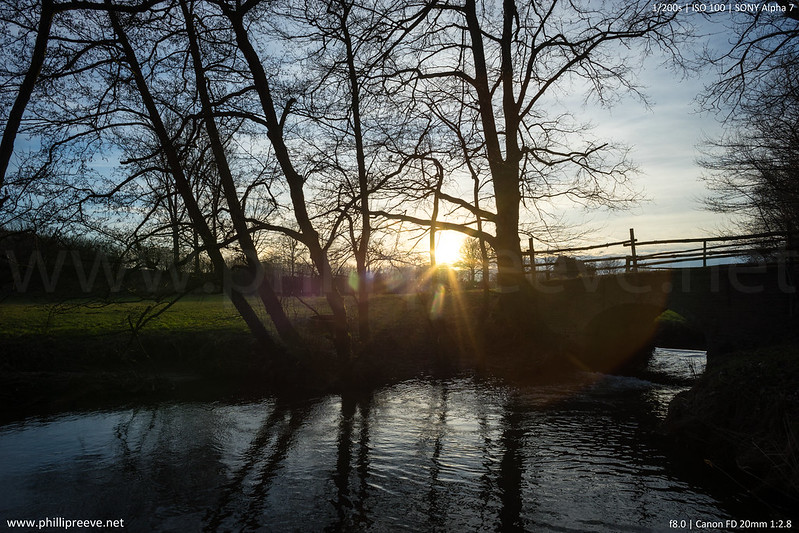
This does not mean that any image with a brighter light source shows ugly flares, here is another example:
The lens does not lose much contrast in backlit situations.
Distortion
Some mustache distortion but I think it will rarely be a problem.
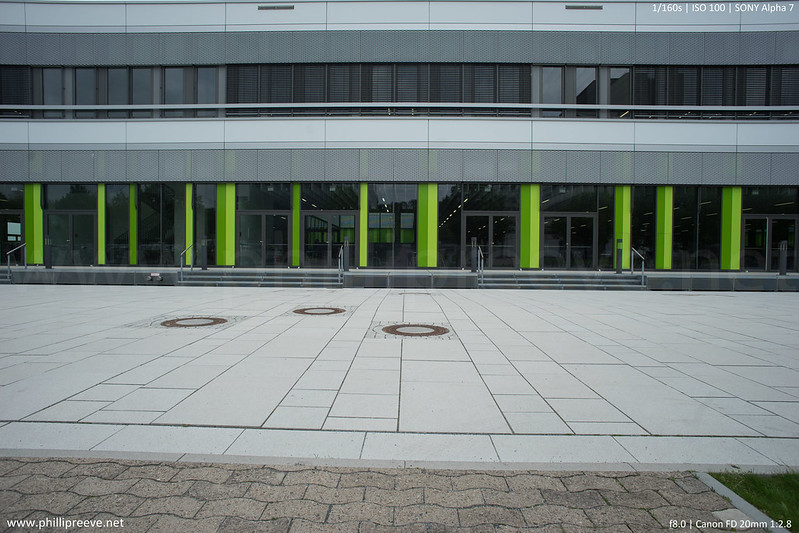
Vignetting
At f/2.8 vignetting is very noticable, by f/8.0 it’s gone for all practical purposes.
Bokeh
For a 20mm lens it’s probably okay but it can be distracting, especially in the corners. Specular highlights have a very defined brighter outer ring.
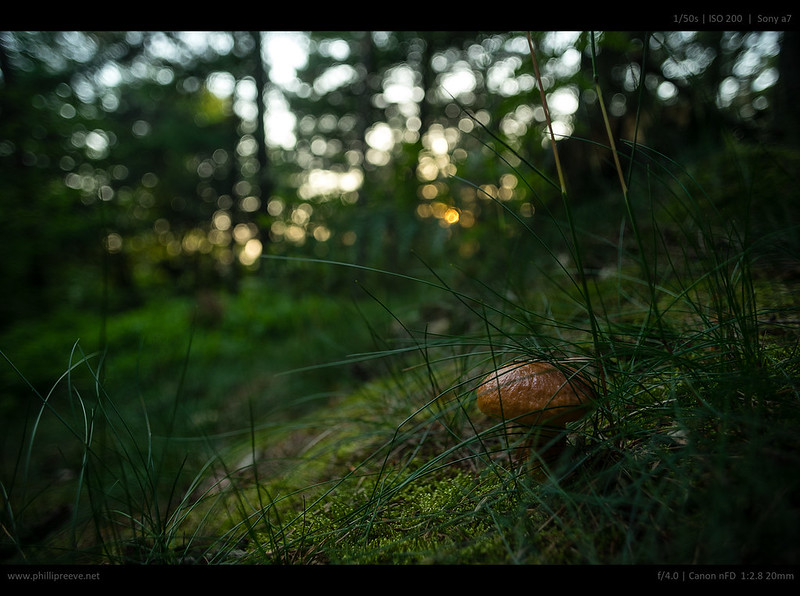
Coma
The lens has lots of coma, you can even see it in the small image below.
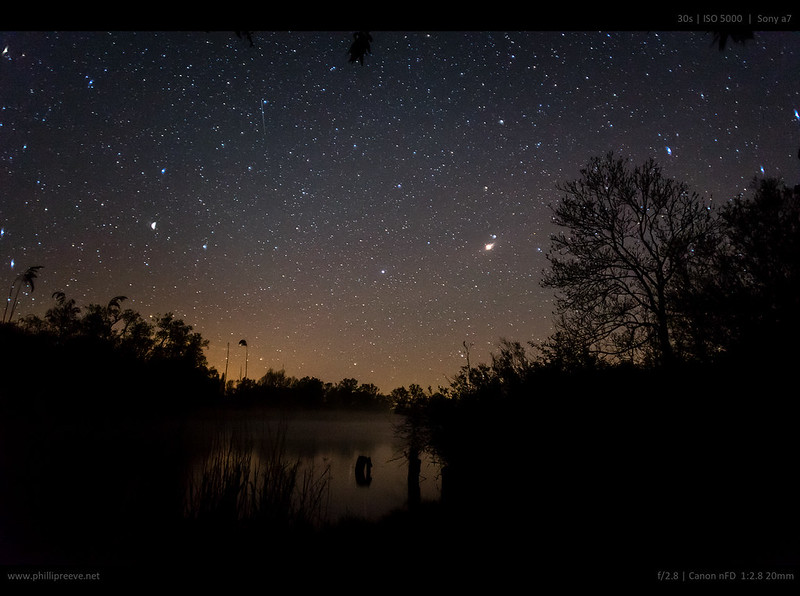
CA
There is a significant amount of lateral CA and you want to correct that.
Here is a link to is my sharpness test without CA correction.
Sharpness
f/2.8: The lens is sharp in the central area covering about 40% of the frame. The cornes are actually not that bad resolved but contrast is very low and there is lot’s of coma and saturation is very low as well. I hardly ever use this aperture.
f/4: Still only the center of the image is usable but the performance is very good there. There is less coma outside of the center but it is still very notable.
f/5.6: very good sharpness across 90% of the frame with a very notable drop in the far corners.
f/8: Very similar to f/5.6 with a small gain in the corners.
At f/11 the Canon is sharp across the frame, only the last few pixels are soft. This is my default setting for this lens.
The lens shows some field curvature but in my experience that works in my favor more often than not. For best corner sharpness I would recommend to focus the edges, not the center.
Other

From time to time I have noticed a hotspot in images with my Canon FD 2.8/20, it was only in a very few images mostly at sunset but it can be a bit annoying.
Alternatives
I have no personal experience with other 20mm lenses but from what I have read online these lenses have a good reputation:
- Olympus Zuiko 3.5/21: s very small and users report good across the frame sharpness at the expense of a little less sharp center.
- Voigtländer 3.5/20: another very small lens with good performance at f/8 and because it is a modern lens it seems to be very flare resistant. I plan to test one in the future but it is a bit more expensive than the FD.
- Voigtländer Ultron 1.8/21: a M-mount lens which is faster and much better in the f/1.8-f/4 range. Modern coatings will also help with reflections. In the F/5.6-f/11 range performance is very comparable to the FD 2.8/20, only vignetting is still noticeable at f/8 and there is a slight color cast.
- Zeiss 2.8/21: a legend of a lens with very good across the frame sharpness from f/2.8. It is large heavy and expensive though.
- Sony FE 4/16-35: the Sony is more flare resistant and performs well from f/4. The larger zoom range and OSS are also handy. But it is bigger, heavier and much more expensive. At f/11 the Zeiss has a little more contrast but less details in the corners.
Conclusion
The Canon FD 20mm 1:2.8 has it’s limitations: You will want to avoid f/2.8 for almost any allpication and you need to stop down at least to f/5.6 for good across the frame sharpness and the corners are best at f/11. The mediocre flare resistance can be a bit limiting and other 20mm lenses are smaller.
In the field it usually delivers a very good performance, at f/8 or f/11 my images are very sharp, contrast and colors are nice. The corners are a little sharper even than the much more expensive Sony 4/16-35 ZA OSS.
SoI think it is a very interesting lens for anyone on a budget.
You can buy the Canon FD 2.8/20 at ebay.de or ebay.com (affiliate links).
Sample Images Canon FD 20mm 1:2.8
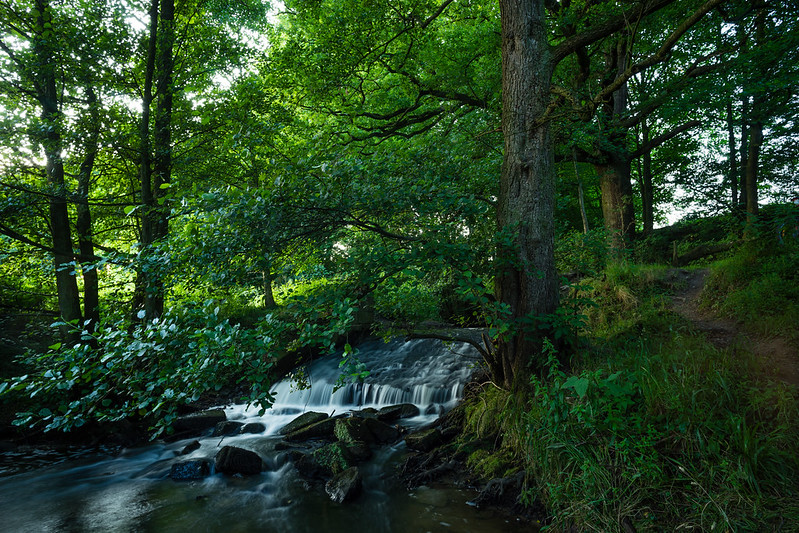
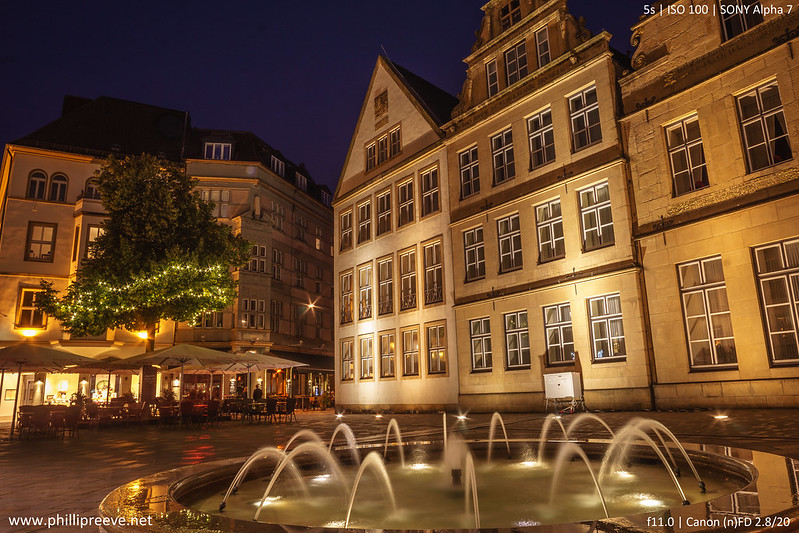
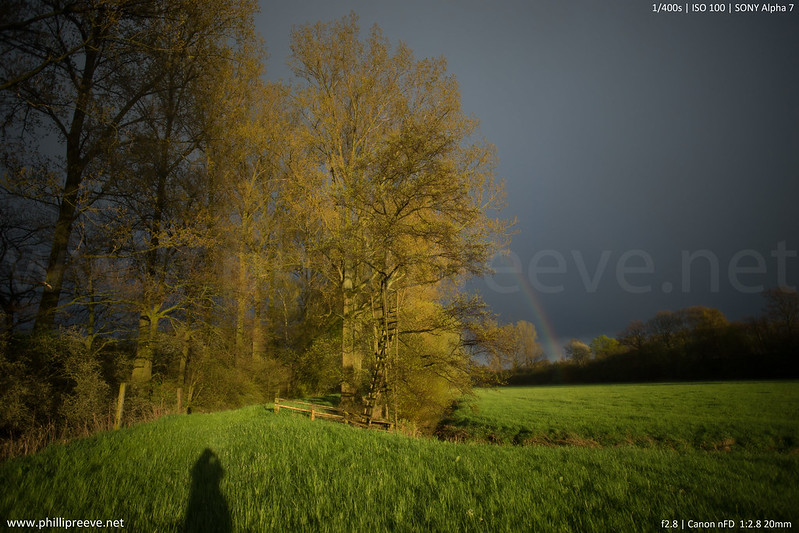
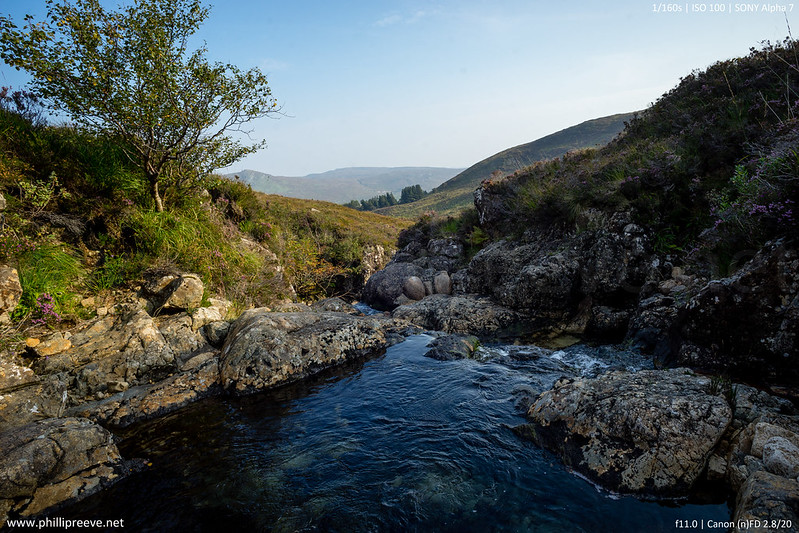
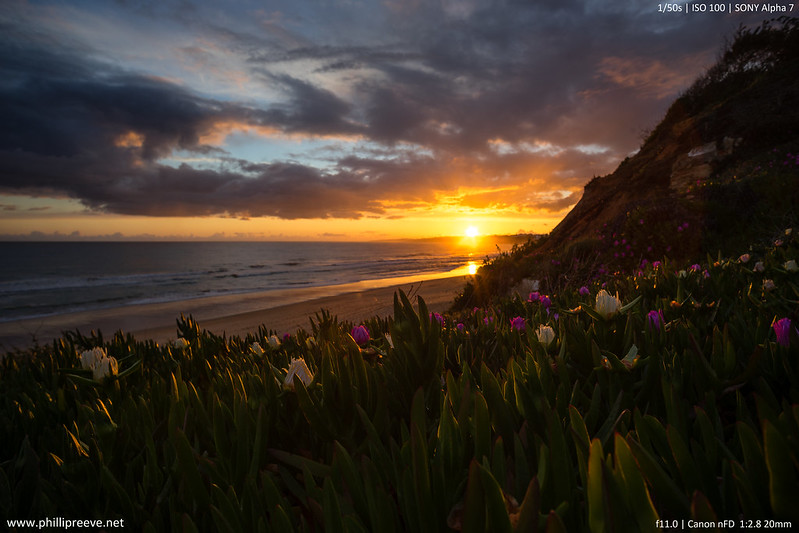
You can find more full resolution images in this flickr set: Canon FD 20mm 1:2.8
Other Articles
- An introduction to manual lenses on the a7
- User-Guide to Canon FD lenses
- User-Guide to wide-angle lenses for Sony a7 a7ii a7rii
- User guide to Ultra Wideangle lenses for the Sony Alpha 7 series
This site contains affiliate links. If you make a purchase using any of the links marked as affiliate links, I may receive a small commission at no additional cost to you. This helps support the creation of future content.
Latest posts by Phillip Reeve (see all)
- Review: Samyang AF 75/1.8 FE - April 12, 2021
- The FE-List now has 113 lenses on it - March 25, 2021
- 2020 – Year’s end review - December 28, 2020
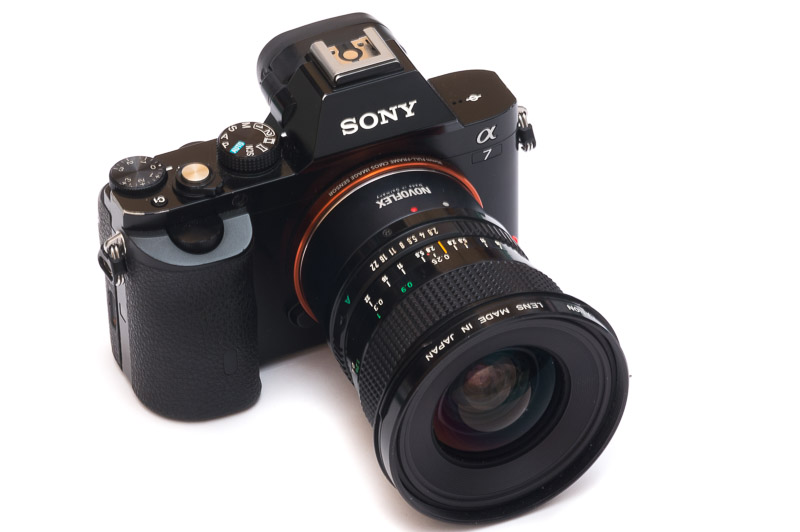
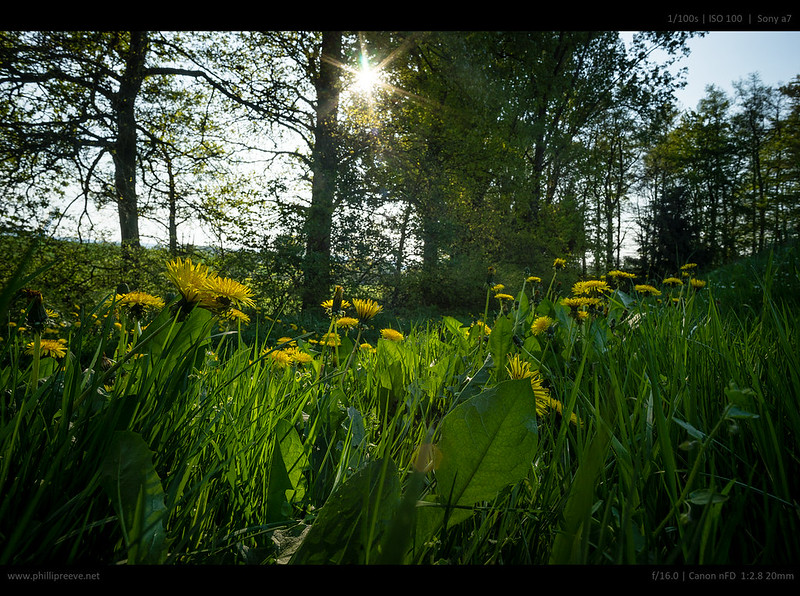
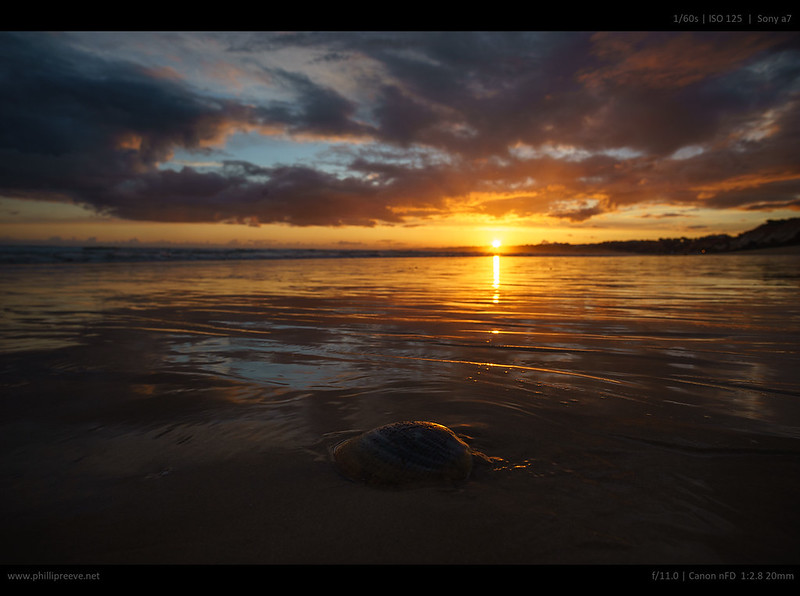
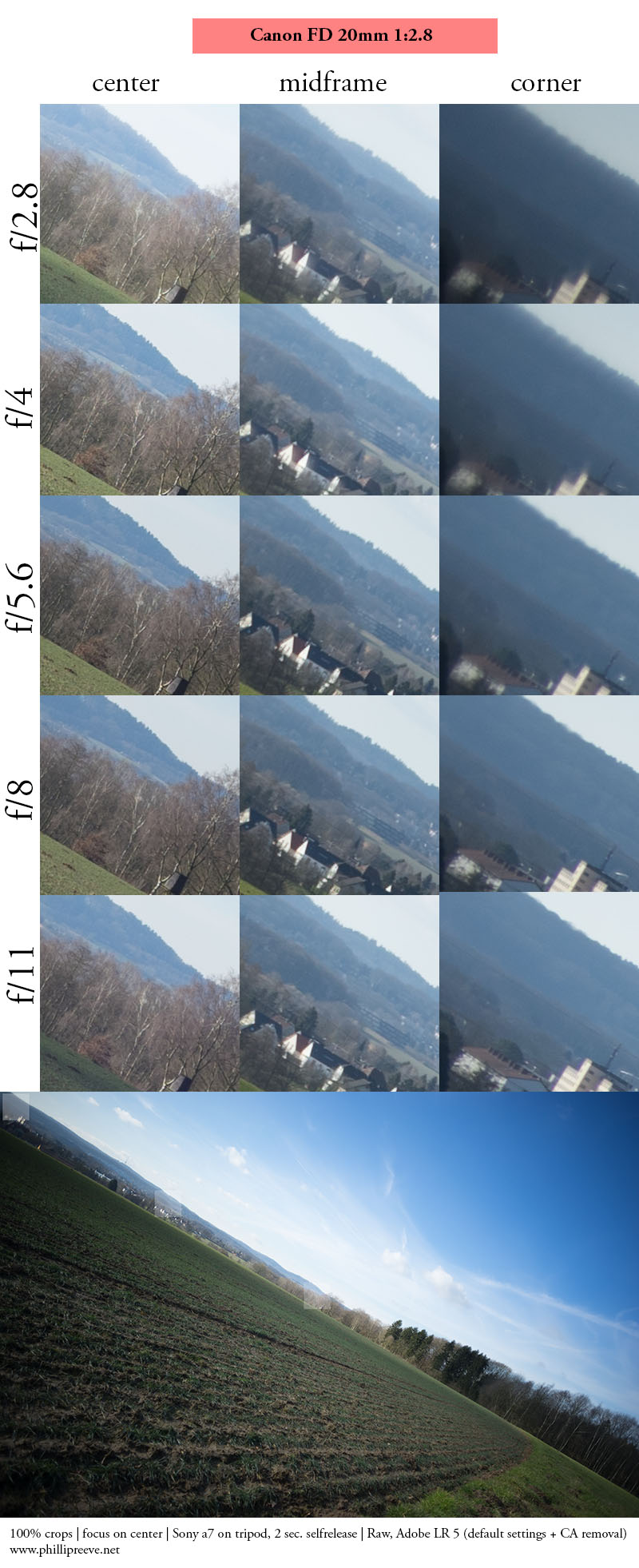
Thank you for this. I am considering the Fd 20mm. Have you happened to use the Fd 17 mm? I am wondering how it might compare…
never used it but I have read several reports which said that it is quite a bit worse
I wold love to see a review of the FD 17mm f4
Not likely to happen honestly.
I’ll be interested in the results if you manage to find a good copy of the C/V Color-Skopar 20/3.5 SLII Phillip. I’m still searching for a good copy copy! First (Canon) was so poor at 3.5 it was a pain to get it in focus. 2nd copy (Nikon) much better to get focus at 3.5, but left edge soft/smeared, however much closed down! However, the right edge is good enough, that I’m now looking again, as, if I can find a copy with both edges good, it should be a very useful lens! I think manufacturing tolerances and quality control must be lax. Be warned. Mechanically it’s a jewel!
I also had issues with the CV 4.5/15 back in the Nex days, my two copies weren’t well centered. But thanks vor sharing your experience, when I buy one (that won’t ne very soon) I will tray to buy from a shop were I can return it
Thanks for this nice review. I would add the Nikkor 20mm (2.8 and 3.5 versions exist) to the list of alternatives. I use the Nikkor AF-D 2.8 20mm with my A7. This lens has very similar characteristics as the Canon FD. Good center sharpness at f 2.8, edges are rather soft up to f/8. The main difference I see is that the Nikon is very flare resistant, certainly a plus. All in all it is an “ok” lens with limitations, I will replace it by a Loxia as soon it will be available here.
from what I have read and the sample images I have analyzed I think that the Canon has the better corners but you are probably right in that the Nikon is moreflare resistant
There is also a 20 2.8 and 20 4.0 with m42 mount (both Flektogon).
Also comparable should be the Minolta Af 20 2.8, but you need at least an la ea1 electronic adapter.
Thanks for educating with your lens choice. I recently purchased a Canon FD 20mm f2.8 for Sony A7r . Could you please send me the details of the Novoflex adapter
Sam
http://amzn.to/1YibQlN
Hi there,
Resently I bought aswell an 20mm fd 2.8f Lens and I use it with the same combo Sony A7 rii But unfortunetly I don’t get any sharp landscape Pictures from close with good light yes. I tride already everything and I don’t know what to do.
Dear Sam are you happy with yours ?
Thank you !
Greetings Istvan
Just a quick question about a quirky sun star. I have a fdn 20mm 2.8 and have noticed when shooting using the lens wide open at bight objects like the sun it produces a half sun star flare (always on the right side of frame) anyone else noticed this?
one stop down and the whole flare comes back. Other wise the lens works quite well on a A7s.
is there an adapter for this to d5300 camera?
no
The german affiliate links point to a wrong lens (Minolta).
fixed, thanks
I’ve been using this lens with the Fotodiox Pro Fusion adapter and experience, so far, is line with your observations. Compared to my FE 1.8/50 and FE 2/28 lenses, it is HUGE!
That said, this is my first adapted lens experience, on Sony. The S-AF is impressive.
I think you use the EF, not the FD version
Hi,
Has anyone tried LEE FILTERS Seven5 series on this lens (72mm ring) and had any filter showing in corner or darkening vignetting?
I have the Seven5 series filters but 72mm is the widest thread you can get, so wide anhles may suffer.
Also, does anyone experience light leak from long exposures with metabones or novoflex adapters on the Sony E mount?
Thank you
What opinion do you have about the Flektogon 20mm / 2.8?
That is, compared to this Canon FD 20mm.
Gracias.
Not a qualified one. In genereal I have been rather underwhelmed by what I have seen from GDR lenses though.
Thanks for the reply!
I am looking for a good 20mm vintage lens and I have these two lenses as the main option.
I already have the flektogon 35mm and I love it. I have several 35mm but the flektogon is my favorite. That leads me to look at the 20mm flektogon with big eyes. Although I see that it is even more expensive than his 35mm sister.
It seems that Canon FD 20mm is cheaper and anyway I see that it is fine.
Anyway, that’s why I’m looking for some comparison and making the right decision. I am very hesitant …
Hi!first,thanks for all the precious information you share,I recently bought a Sony a7s and since then this site has become the bible for me!
Since I already own few good fd lenses and fd-nex adapter,I’m considering this lens for astrophotography (so wide open)and general landscape/long exposures.how do you think it performs for milky way shots and startrails?
It doesn’t perform well for those. Massive coma.
For these applications you can better use an Irix-15mm f2.4 Firefly will cost about 400 Euro. If you want to stick with 20mm, a more expensive [700%] Nikkor 20mm f1.8 (@ f2.5) will do the job. Don’t go for the cheapo Samyang 14mm / 20mm / 24mm, if you have a good sample …20% chance, than after some time the lenselements will losen and needs to be realigned again.
Any idea how this compares to the EF variant? Is the EF worth the extra weight and size?
No idea.
Hi Phillip,
to avoid soft sides/edges due to field curvature you recommend focussing on the edges. Will this result in a softer center or will it still be acceptably sharp? I’ve never tried your recommendation myself, but i just realized that field curvature/my ignorance ruined some great shots…
It will result in a tad less sharp center but far from soft.
I wanted to adress field curvature one more time, which i find a very important issue with this lense (same can be said for the fd17mm but not fd 24mm) and needs to be kept in mind especially for landscape photography. In my experience this usually means focusing on corners/edges for best overall Performance (and ofc f8-11). I think this is not made too clear in the review.
Don’t I write just that? “The lens shows some field curvature but in my experience that works in my favor more often than not. For best corner sharpness I would recommend to focus the edges, not the center”
I just mean it isnt made clear enough.
In a pro/average/con table field curvature should be listed under cons.
Here I disagree. I actually found field curvature helpful quite often. Of course it is a downside for some scenes but with most 3D scenes it helped to get everything into focus.